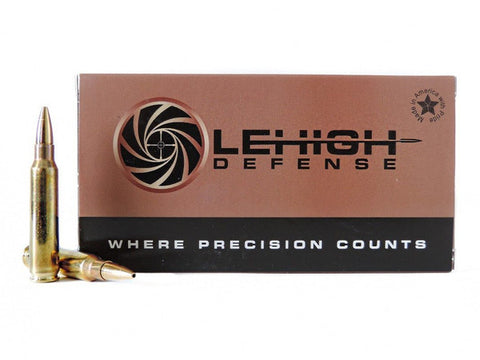
The Best Ammo: Introduction
Welcome to what we are calling the “Best Ammo Series.”
While we understand that labeling one type of ammunition as the best is would not only stir tons of hate from the online community but it would also be inaccurate. Calling one round, style or manufacturer the “Best Ammo” would be akin to affirmatively declaring the Ford F-250 to be the best automobile ever. Clearly, the F-250 wouldn’t perform very well on the NASCAR circuit, nor would it be the best fit for an urban-living family of seven. Automobiles are built for a specific purpose and the same is true for ammo.
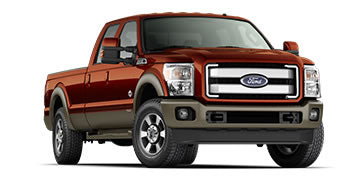
Ford F-250: good pickup, not good race car.
Just like there are different classes of vehicles and sub classes within those classes, there are different classes of ammo. For example, the F-250 falls into the category of pickup truck and within that category it is on the middle-lower end of engine size. The parallel drawn here with ammunition is that within each caliber (9mm, .223/5.56, 45 ACP, etc.) there are different bullet designs, loaded to travel at different speeds, built to perform differently, in weapon, inflight and upon impact.
For this series we will be addressing what features make the best self defense ammo in a variety of pistol calibers, and the best hunting ammo in a range of rifle calibers. Spoiler alert, we will not be claiming a specific best ammo for each caliber discussed. We will however, be highlight the strengths and weaknesses of each caliber and then provide a couple of types of ammunition that perform particularly well in each caliber.
As we proceed through each of the different calibers, we will be discussing a few key factors:
Bullet weight:
This is exactly what it sounds like, the weight of bullets available in each caliber. While there are always exceptions, each caliber has a range of bullet weights that are typically used and function the best.
Bullet weight is measured in grains. One grain is equal to .00014 pounds. For your reference, 9mm ball ammo is typically 115 or 124 grain.
While it may seem counterintuitive, most common caliber pistol bullets weight more than many common caliber rifle bullets. For example, a .223/5.56 bullet generally weighs between 55 and 70 grains. .380 Auto full metal jackets weigh somewhere around 100 grains making them nearly twice as heavy.
55 grain .223 ammo. Small bullet, high speed.
There are many reasons for this but to keep it brief, rifle ammo travels many times faster than pistol ammo and is intended for use at much longer ranges. Since a bullet’s energy is dependent on its speed and mass, a smaller rifle bullet usually carries many times more energy than a larger pistol bullet and remains stable in flight for much longer. Continuing with the same example above, a typical 55 grain .223/5.56 bullet carries 1,282 foot pounds of energy whereas a 95 grain .380 bullet only carries 192 foot pounds of energy.
One special consideration when buying pistol ammunition is that some pistols only cycle heavier bullets. The pistols that fail to cycle lighter bullets are most often small pocket pistols with very stiff recoil springs and a small slide. In these pistol ammo with lightweight bullets doesn’t always produce enough recoil to fully overcome the resistance of the recoil spring.
The other reason some pistols fail to cycle lightweight bullets has to do with the shooter’s grip. If a shooter doesn’t have a strong hold and stiff wrist for the weapon to cycle against, the recoil from firing may be absorbed by the shooter’s arm and not give the slide a firm back stop to bounce back from. Rifles are generally less ammo picky because of their heavier bolts, better support from the shooter.
Bullet Type:
Here is where we find the greatest variation within each caliber. Bullet design has come a long way from musket balls, offering the modern shooter many options. Click here to learn more about different types of defensive bullets.
There are a few basic categories of bullets for both rifle and pistol calibers.
Ball Ammo
The first bullet category is found in “ball ammo.” Ball ammo is commonly called plinking ammo and its bullets are cheap lead-based projectiles. Ball bullets may be simply swaged lead, or lead wrapped in copper in the form of a full metal jacket (all sides except the base of the bullet is wrapped in copper) or total metal jacket (all sides including the base of the bullet is wrapped in copper). Recently a few companies have brought some lead free plinking ammo to the market including PolyCase's RNP and Alchemist's Z-Clean. Upon impact, these bullets create a tradition wound channel and generally penetrate deep into a target.
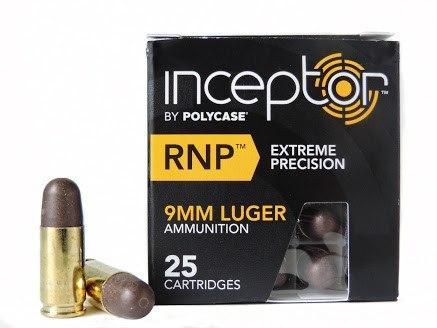
PolyCase's non-traditional plinking ammo.
Ball ammo is not to be confused with “Match Ammo” or “Match Bullets.” Although often constructed with a lead base and copper jacket, match bullets are more finely tuned, used for precision shooting, and much more expensive than plinking ammo.
Hollow Points
The second category is hollow point bullets. Hollow points are nearly as common and well known as ball ammo. In both pistol and rifle calibers, hollow points are designed to mushroom open impact causing greater damage than ball ammo does. These bullets are constructed from a variety of materials including lead, copper and brass and have many variations in design.
Some hollow points, like the Allegiance PowerStrike and Barnes Tipped TSX, have a polymer tip inserted into the hollow cavity. Polymer tips such as these are very popular for hunting rifle bullets because they help high speed bullets open up more quickly, increasing the chance of humanely bringing down game.
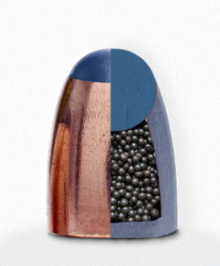
The Glaser Safety Slug is another tipped hollow point.
In pistol calibers, tipped hollow points are the exception rather than the rule. Most have a basic open tip that forces expansion upon entering a fluid.
Penetrators
A third and much less common type of bullet are penetrators. Penetrators are designed for two distinct purposes. Some, like Lehigh Defense’s .380 Xtreme Penetrator Ammo, are used primarily in small pistol calibers to extend the penetration depth of light, slow moving bullets. In addition to extending penetration, these penetrator bullets are designed to generate a larger wound cavity than ball ammo.
Others are explicitly designed for big game hunting. These penetrators, Cutting Edge Bullets’ HG Solids, are generally machined from a solid metal and designed for large calibers. These bullets are used for hunters who are less concerned with generating a wide wound cavity but need a bullet that will pass through thick tissue and bone. These are “Safari Bullets” made to take down the largest game in the world.

Cutting Edge Bullets' 410 grain solid copper bullet.
Safari bullets have been around for much longer than the small caliber self defense penetrator bullets. The self defense tailored versions have been gaining much traction in the last five or so years and new offerings are regularly added such as Lehigh Defense’s .32 Auto Cavitator and PolyCase’s line of ARX Ammo.
Frangible
By far the least common of the bullet types are frangible bullets. Frangible bullets, like those produced by ICC Ammo, are special purpose bullets that were initially designed for training applications and for use around sensitive infrastructure (think nuclear facility security). More recently, innovations in frangible materials and design have made specific frangible bullets useful for self defense. Since frangible bullets are so rarely used in comparison to the other three types we won’t spend a considerable amount of time discussing them in this series. Here is an article for those of you who would like to learn more about frangible ammo.
Velocity:
How fast the bullet travels. This is the final bullet specification we will discuss as we work our way through each caliber. Bullet velocity will be a little tricky because many things influence a particular bullet’s speed. Out of the box the two big influences on a bullets velocity is the bullet weight and amount/type of powder that is propelling it.
When buying ammo, you will rarely find a manufacturer listing the type of powder they use in a particular box of ammo. The exception here is very high-end competition ammo or custom loads. This is because for the common shooter powder type doesn’t affect performance that much. In the past few years it has also been because powder has been in short supply so manufacturers had to load with what they could get their hands on.
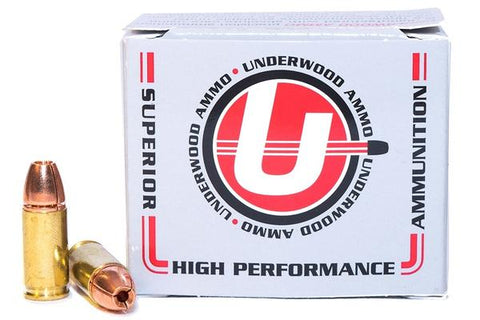
Underwood offers the same bullet loaded to multiple velocities.
A box of ammo should always list the weight of the bullets in grains and if it doesn’t, it may be wise to buy something else.
Where things get tricky is that barrel length also has a significant impact on the speed at which a bullet flies. Generally, a longer barrel will increase a bullet’s speed. Like most things, increasing barrel length provides marginally less additional speed up to the point where it actually decreases speed. Firearm and ammo manufacturers know this which is why you don’t see people shooting AR-15’s with 60-inch barrels.
All of the factors above assume one is measuring bullet velocity at the muzzle (which is where listed velocities are usually measured). However, once a bullet leaves the barrel, it begins to slow down. The rate a which a bullet slows in flight is determined by many factors.
For our discussion we will simply note that upon leaving the barrel a variety of atmospheric factors, such as: humidity, elevation, wind, etc. influence a bullet’s speed. We won’t pretend to be experts on this subject but it is interesting and the more you learn about long range shooting the more impressed you will be with shooters that can consistently hit targets past 1,000 meters or so. Those of you who are interested, Google info on long range ballistic calculations/shooting. It’s pretty neat.
Not 1,000+ meters, but impressive with a .22 LR.
Looking Ahead
So that’s where we are heading. We will be regularly adding a discussion of a new caliber so stay tuned to read about your favorite caliber or one you are interested in learning more about. If you would like us to cover a particular caliber, let us know in the comments below.

